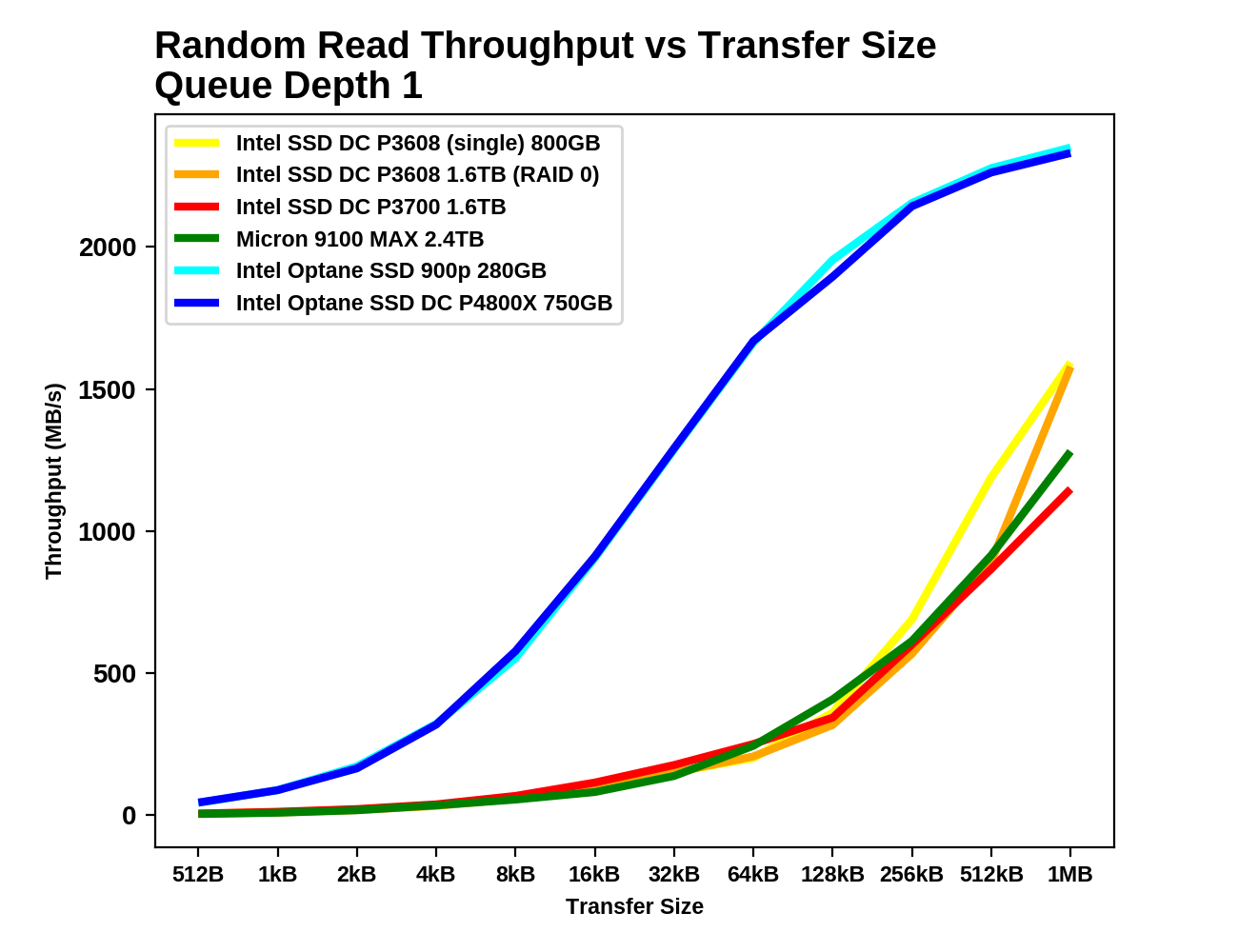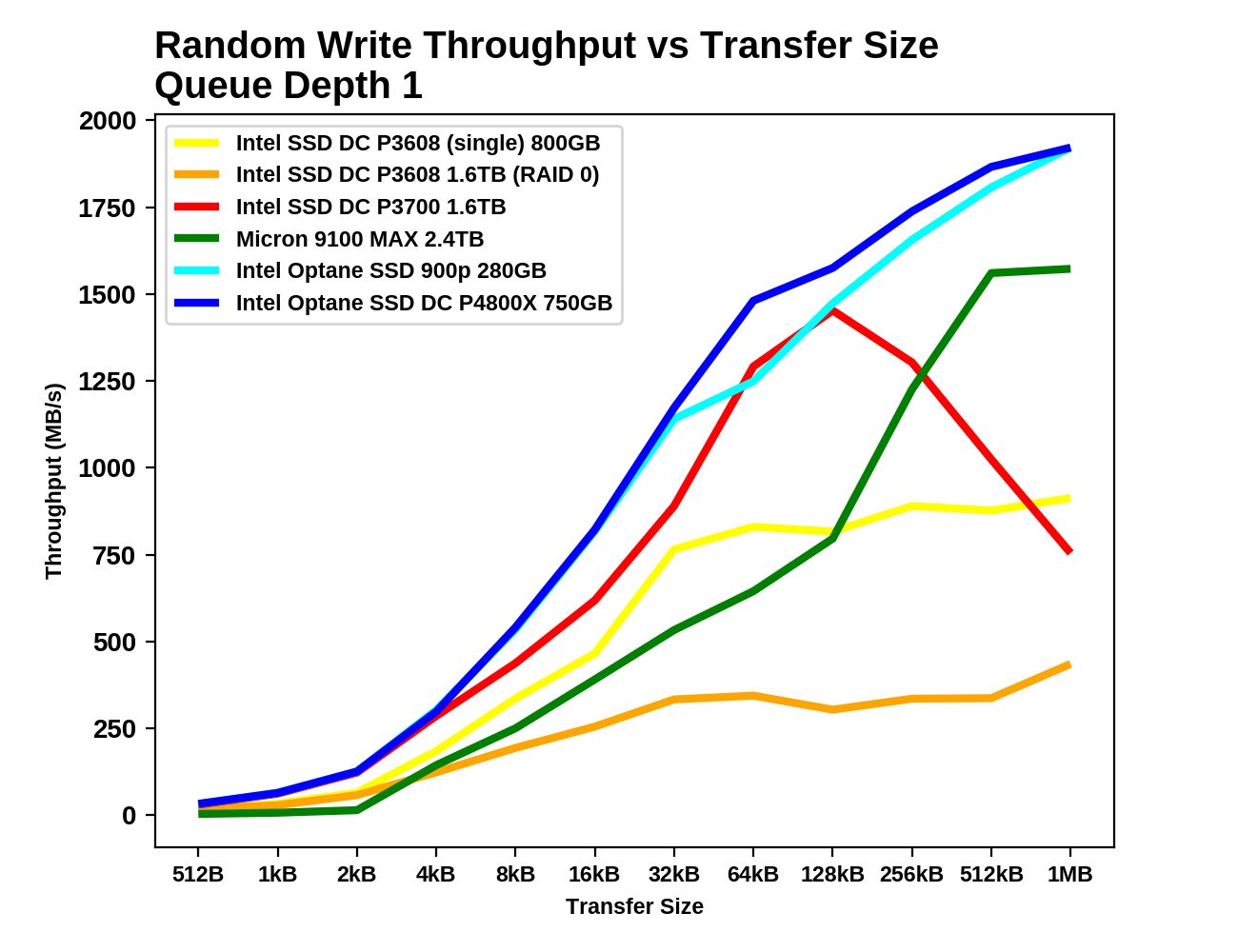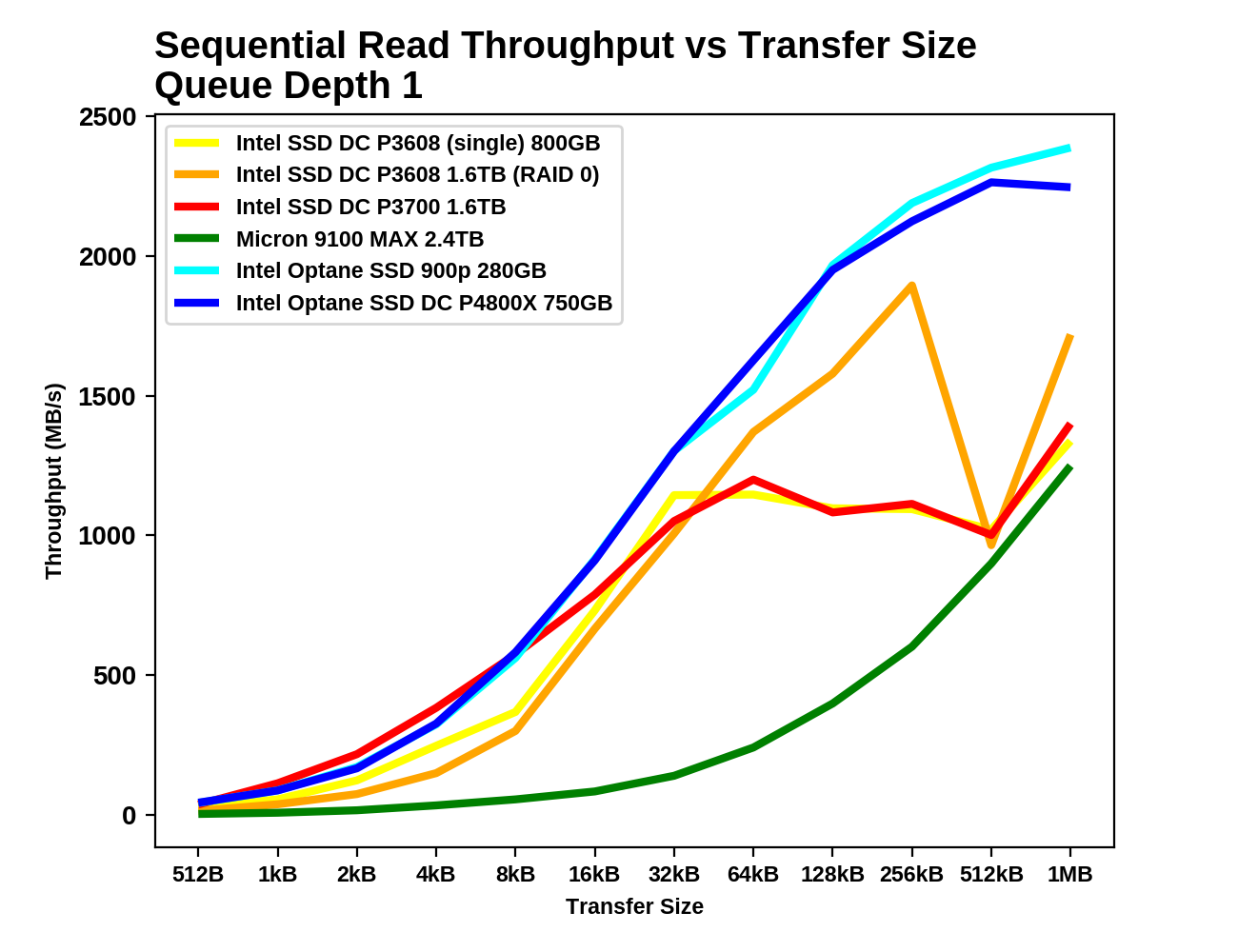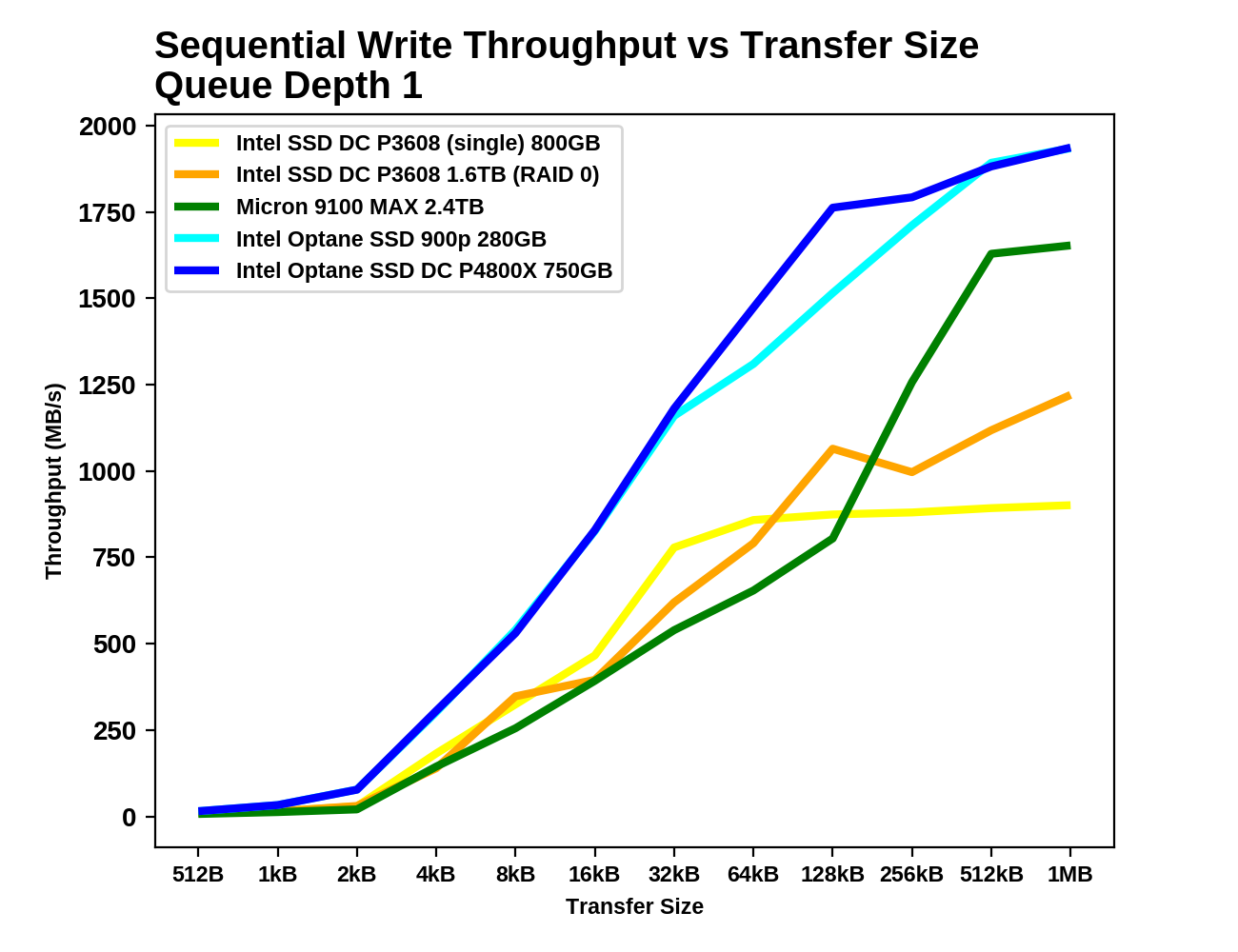Intel Optane SSD DC P4800X 750GB Hands-On Review
by Billy Tallis on November 9, 2017 12:00 PM ESTPerformance VS Transfer Size
Intel's 3D XPoint memory is not bound by the page and erase block structure of NAND flash. Intel hasn't disclosed what the native word size of the 3D XPoint memory array is, but the Optane SSD DC P4800X as a whole is optimized for 4kB or larger transfers. Real-world I/O isn't always constrained to just the 4kB and 128kB transfer sizes most of our synthetic benchmarks use, so the next several tests look at single-threaded QD1 performance of transfers ranging from a single 512-byte sector up to 1MB blocks. For random reads and writes, the impact of issuing commands with suboptimal alignment is also considered. Depending on how a drive is organized internally, unaligned accesses can significantly increase the amount of work the controller needs to do.
 |
|||||||||
| Vertical Axis scale: | |||||||||
| Block Aligned | Linear | Logarithmic | |||||||
| 512B Aligned | Linear | Logarithmic | |||||||
The random read performance of the Optane SSDs is completely beyond the reach of the flash based SSDs, even for large block sizes. Even when the reads aren't aligned to the block size or to the drive's preferred 4kB alignment, performance is still great until the block size reaches 128kB, the largest the Optane SSD can transfer from a single command. At that point, the Optane SSDs slow down slightly before performance continues to grow at a more moderate pace.
 |
|||||||||
| Vertical Axis scale: | |||||||||
| Block Aligned | Linear | Logarithmic | |||||||
| 512B Aligned | Linear | Logarithmic | |||||||
The random write performance of the Optane SSDs is not much better than the Intel P3700, especially for writes smaller than 4kB. The Intel P3608 and Micron 9100 MAX are slower across the entire range of block sizes. For unaligned writes of larger block sizes, the Optane SSDs hit a hard limit at around 1.3GB/s while properly aligned writes can approach 2GB/s for large blocks.
 |
|||||||||
| Vertical Axis scale: | Linear | Logarithmic | |||||||
The Intel P3700 delivers a slightly higher QD1 sequential read throughput for small block sizes, likely due to the controller caching whole NAND pages in RAM. At the larger block sizes more typically used for sequential I/O, the Optane SSDs are on top and the many of the flash-based SSDs cannot reach full performance without going beyond QD1.
 |
|||||||||
| Vertical Axis scale: | Linear | Logarithmic | |||||||
None of the SSDs perform particularly well for writes smaller than 4kB, but the Optane SSDs do have a clear advantage. As transfer size grows, the Optane SSDs pick up speed faster than the flash-based SSDs. The Intel P3608 is the first to start hitting a performance ceiling, while the Micron 9100 is almost able to catch up to the Optane SSDs.










58 Comments
View All Comments
AlaskanDruid - Thursday, November 9, 2017 - link
Ok. what am I missing? What is the use of these when you can have one in a m.2 form which takes up MUCH less room?I know I'm missing something, but what is it?
Drumsticks - Thursday, November 9, 2017 - link
The drives dissipate 12-18W, which is 2-3x more than flash based SSDs. I don't think the m.2 form factor would make heat dissipation easy, unless you scale the design back down to the 32-120GB range.Billy Tallis - Thursday, November 9, 2017 - link
More than just capacity, you'd almost certainly have to scale down performance by a lot. It's possible to do better than the current PCIe x2 32GB module, but a 7 channel controller would be hard to fit physically, and it would have to run slower to not melt. I think a ~3 channel M.2 drive is plausible, but I'm not sure its write speeds would be high enough.DanNeely - Thursday, November 9, 2017 - link
it looks like you could physically do 7 (or even 8) channels on a dual sided 22110 m.2 module with the current package size. The thermals would be a real challenge though; and are why I really wish U.2 would've gained at least a little traction in the consumer market.Billy Tallis - Thursday, November 9, 2017 - link
I was thinking more along the lines of a 22x80mm card. I agree that 7 3D XPoint packages is probably possible on 22x110, but I'm not sure how dense the controller's BGA pad can get.DanNeely - Thursday, November 9, 2017 - link
If you went 2 sided you could fit 6 on a 2280 card. With a bare bottom they're just short on enough room for a 3rd package on top; move some of that misc stuff underneath and you'd free up the PCB area needed.Rwbeckman - Thursday, November 9, 2017 - link
This is the datacenter model, good for releasing higher capacity sooner with its size. Plus rackmount cooling design will help. U.2. Will be for hot swap, the card will not. The M.2 enthusiast consumer model is the 900PSamus - Thursday, November 9, 2017 - link
XPoint technology is just one of the reasons Intel released the "ruler" form factor for future SSD's. I suspect a mobile variant will replace m2 in the future.https://www.anandtech.com/show/11702/intel-introdu...
CheapSushi - Thursday, November 9, 2017 - link
Or just use the new M.3 format (wider) that Samsung came out with.Drumsticks - Thursday, November 9, 2017 - link
Great review Billy, thank you!Optane as a gen 1 product is pretty fantastic. I can't wait to see how the rest of the market will compete, and what Intel and Micron (where are their drives?) can do for round two.